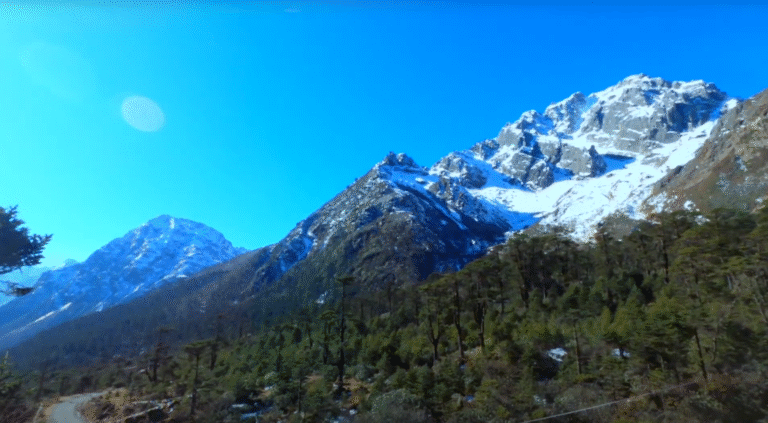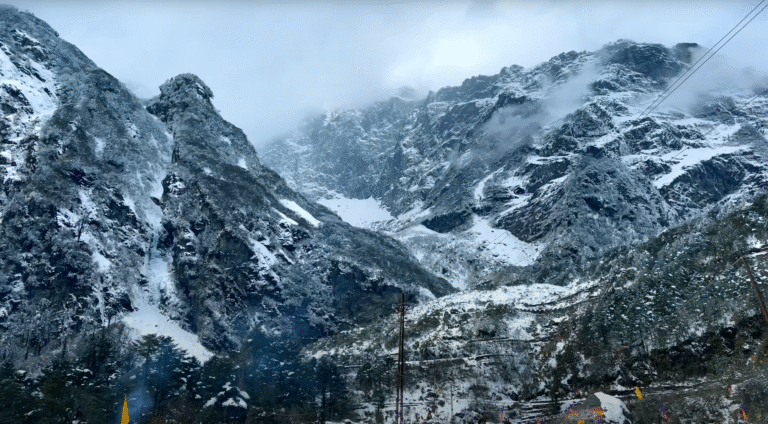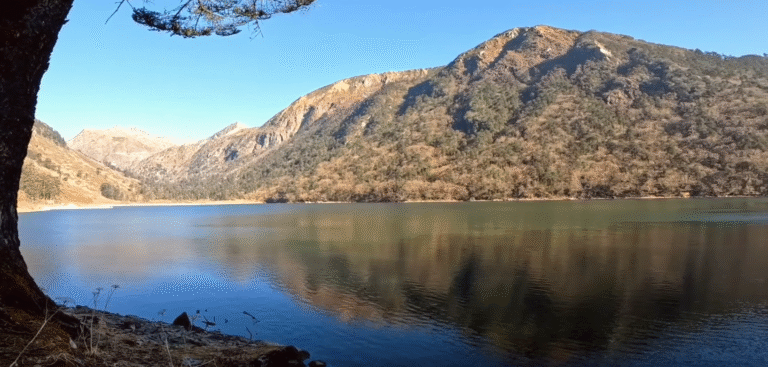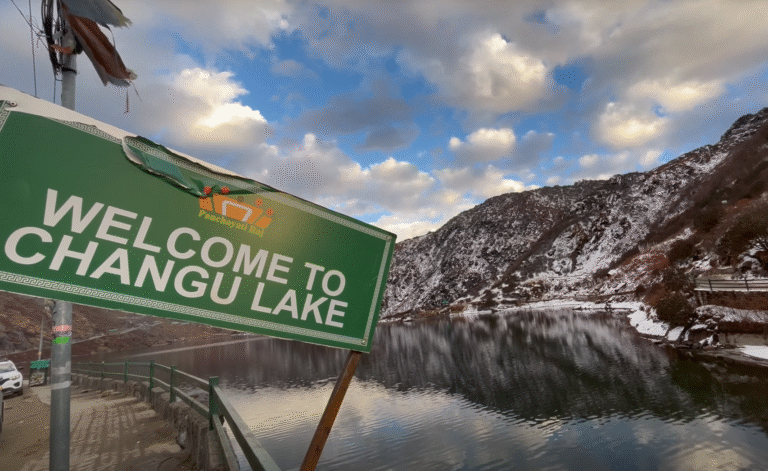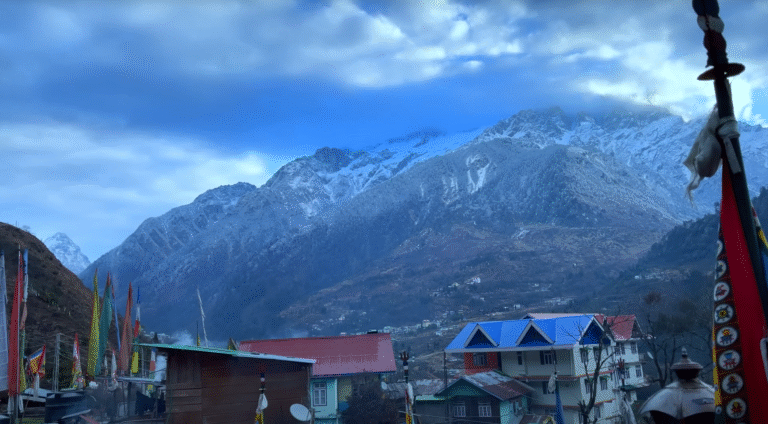Sikkim Wildlife Conservation — An in-depth, research-driven review
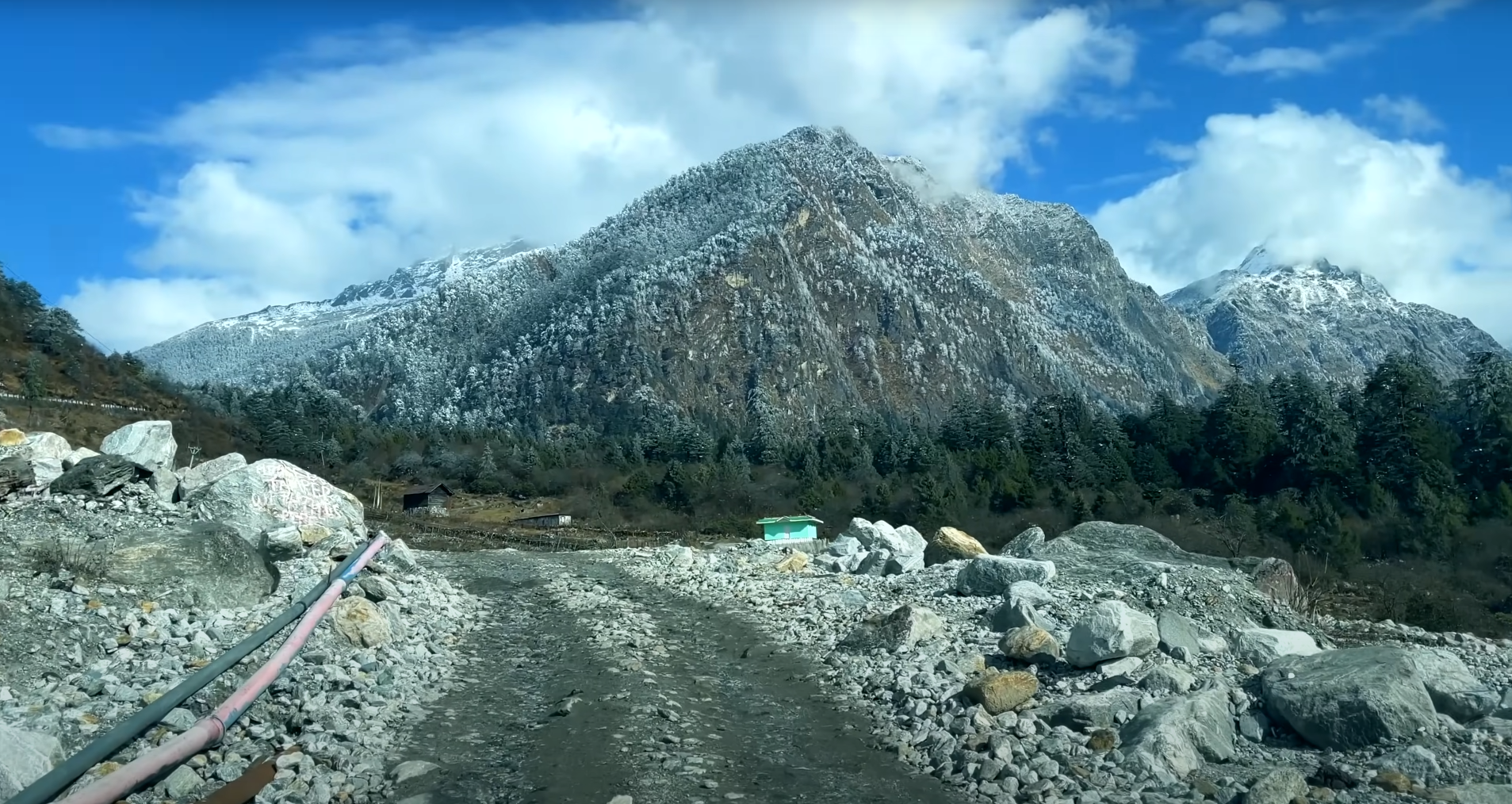
Summary : Sikkim — a tiny state with enormous vertical range — protects some of the Eastern Himalayas’ richest ecosystems. It has world-class protected areas (including the UNESCO-inscribed Khangchendzonga site), an ambitious community-centered conservation model, and an audacious statewide organic farming policy. Yet Sikkim faces urgent threats from climate change, hydropower and infrastructure development, and growing human-wildlife conflict. This long form article maps the state of knowledge, synthesizes recent research and policy, highlights flagship species (especially the red panda), and ends with practical, evidence-based recommendations for strengthening conservation over the next decade. Key factual claims are sourced in the text.
1. Why Sikkim matters: geography, biodiversity and endemism
Sikkim’s conservation importance flows from its extraordinary vertical gradient — from about 280 m in the south to 8,586 m at Kanchenjunga in the north — which compresses many climatic zones into a small area. That compression drives high habitat diversity and endemism: tropical and subtropical forests, temperate broadleaf and mixed forests, subalpine and alpine meadows, glaciers and permanent snowfields. Khangchendzonga National Park alone sweeps from ~1,200 m to above 8,500 m over roughly 1,784 km², making it one of the world’s most vertically extensive protected areas and a UNESCO World Heritage (mixed natural + cultural) site.
Biodiversity highlights:
- Plants: Hundreds of orchids and rhododendron species, a rich medicinal flora.
- Birds: >500 species reported from the state — pheasants, Himalayan monal, tragopans and many migratory and resident specialists.
- Mammals: Snow leopard, clouded leopard, Himalayan black bear, Himalayan tahr, musk deer, and the red panda (the state animal).
- Invertebrates: Exceptional butterfly and moth diversity in lower and mid-elevations.
Sikkim’s role in transboundary conservation is also crucial: northern protected areas connect with conservation landscapes in Nepal, Bhutan and Tibet, forming ecological corridors for altitudinal migrants and wide-ranging species.
2. Protected area system and governance: scale, structure and trends
Sikkim punches above its weight in protected-area coverage. According to the state forest department, protected areas (1 national park, multiple wildlife sanctuaries and a conservation reserve) cover roughly 30–47% of the state’s geographical area, depending on the metric used (forest department figures often cite ~30.7% formal PA coverage while other state accounts list protected and reserved forest area figures approaching 46–47%). These differences reflect distinctions between statutory protected areas, reserved/protected forest classification, and biodiversity conservation zones. Regardless of the precise percentage, Sikkim has among the highest proportions of land in protection for an Indian state.
Key protected areas to watch:
- Khangchendzonga National Park / Biosphere Reserve — UNESCO mixed site (natural + cultural); large altitudinal range and high endemism.
- Shingba Rhododendron Sanctuary — important for floral diversity and seasonal pollinators.
- Fambong Lho, Maenam, Kyongnosla, Pangolakha — sanctuaries that provide habitat for red panda, bears and pheasants, and serve as community-use landscapes near settlements.
Governance notes: Sikkim uses a mix of state forest/wildlife department control and community forest/monastery governance over sacred groves. This hybrid model creates localized stewardship that often complements formal protection — a theme revisited later.
3. Flagship species and population insights — the red panda and beyond
The red panda — a conservation lens
The red panda (Ailurus fulgens) is the iconic species for Sikkim: legally protected, culturally significant and ecologically representative of high-elevation temperate bamboo forests. Monitoring and surveys indicate Sikkim historically hosted an estimated ~300 red pandas (estimates derived from coordinated surveys and NGO-government efforts). WWF and state wildlife programs have been instrumental in population assessments, habitat mapping, captive breeding and community outreach around the species. Habitats with healthy bamboo understories and intact mixed conifer forests are essential for red panda persistence.
Threats to red pandas:
- Fragmentation of bamboo stands and mature forest.
- Livestock grazing and fuelwood collection reducing understorey structure.
- Climate-driven shifts in bamboo phenology and distribution.
- Illegal capture, occasional poaching and incidental trapping.
Conservation responses include habitat restoration (bamboo enrichment), anti-poaching patrols, community monitoring and targeted research to refine occupancy models (which improve population estimates and habitat management). Government zoos and Himalayan Zoological Park in Gangtok contribute to captive management and public education.
Other species of conservation concern
- Snow leopard: Occurs at the highest elevations and in transboundary alpine landscapes; climate change and prey availability shape its long-term prospects.
- Himalayan black bear & clouded leopard: Use middle elevation forests; human access/roads create pressure.
- Birds of prey and pheasants: The state supports important populations of pheasants (blood pheasant, monal) and altitudinal migrants that rely on intact forest matrix.
4. Community engagement and traditional conservation safeguards
Sikkim’s conservation story is not only state action — it’s cultural. Local communities, Buddhist monasteries (gumpas), and sacred landscapes have traditionally restricted resource extraction in certain groves and high lakes. Several factors make community participation effective here:
- Sacred ecology: Reverence for lakes, groves and shrine forests limits exploitation in many places.
- Community forest management: Research shows local institutions — including forest management committees and community-based ecotourism groups — effectively patrol, manage grazing and promote alternative livelihoods. These practices sustain local buy-in for conservation.
Case examples:
- Kewzing and other “bird villages” — community tourism and homestays linked to habitat protection and birdwatching income.
- Pastoralist adaptations: Studies on Dokpa pastoralists in North Sikkim document how transhumant grazing and wildlife coexistence require negotiated grazing regimes and compensation for livestock depredation to maintain positive attitudes toward predators. Compensation schemes exist but vary in effectiveness and timeliness.
5. Land-use change, infrastructure and hydropower — the single biggest modern stressor
Hydropower and slope stability
Sikkim’s rivers, especially the Teesta, are attractive for hydropower investment. However, large hydropower projects and linear infrastructure (roads, tunnels, ropeways) have fragmented habitats, altered river flows and increased slope instability, which in turn threatens both communities and wildlife. Recent incidents — including landslides affecting hydropower infrastructure (e.g., Teesta-V damage reports and glacial lake outburst events affecting infrastructure) — highlight the risk of siting heavy infrastructure in fragile, high-relief mountain systems. Environmental groups and researchers have raised concerns about cumulative impacts of multiple projects.
Roads, tourism and edge effects
- Road widening, frequent slope cutting and increased vehicular traffic bring noise, edge effects and invasive species.
- Tourism growth — while economically beneficial — increases waste, localized disturbance and pressure on sensitive high-elevation trails if not well managed.
Conservation implication: infrastructure planning in Sikkim must integrate land-slide mapping, biodiversity sensitivity layers, and cumulative impact assessments rather than single-project environmental impact statements.
6. Climate change: glaciers, GLOF risks and altitudinal shifts
Sikkim’s cryosphere is warming. Glacial retreat and glacial lake outburst floods (GLOFs) pose direct threats to life, settlements and downstream habitats. The 2023–2024 period saw high-profile glacial/slope events across the Eastern Himalaya region that damaged infrastructure and caused loss of life — patterns that are expected to intensify with warming and extreme precipitation. For wildlife, climate change causes range shifts (species moving upslope), phenological mismatches (e.g., bamboo flowering cycles), and altered water regimes — all of which complicate long-term conservation planning.
Management strategies already discussed in the literature include:
- Glacier and glacial lake monitoring (remote sensing + ground truthing).
- Early-warning systems for GLOFs and climate-smart infrastructure.
- Climate-adaptive protected area design that preserves elevational corridors.
7. Policies that stand out — Sikkim as the “organic state” and its conservation implications
In 2016 Sikkim declared itself the world’s first fully organic state, phasing out chemical fertilizers and pesticides in agriculture. The policy transition had multiple conservation benefits: reduced agrochemical runoff, healthier soils, stronger pollinator communities and lowered contamination of aquatic and forest ecosystems. Several independent commentaries and case studies have analyzed Sikkim’s organic transition, describing it as ambitious and locally tailored, but note trade-offs (transition costs, short-term yield impacts, need for extension services). Overall, the organic policy is a unique policy lever linking agriculture and biodiversity health in Sikkim.
For conservation, this policy helps by:
- Reducing non-target impacts on insects (pollinators) and soil microfauna, which sustains insectivorous birds and amphibians.
- Maintaining better water quality flowing into forested catchments.
- Creating an incentive structure for ecosystem-friendly farming near protected areas.
8. Human–wildlife conflict (HWC): scale, impacts and response evaluation
HWC in Sikkim manifests primarily as:
- Crop depredation by wild boar, rhesus macaques and monkeys in lower elevations.
- Livestock predation by leopards and smaller carnivores in upland grazing areas.
- Property damage and occasional human injuries.
Government and research reports note that compensation schemes exist and are part of mitigation (some programs condition compensation on improved animal husbandry or corral standards). Field studies in North Sikkim and other zones emphasize that timely compensation, predator-proof corrals, community insurance pools and livelihood alternatives are most effective in reducing negative attitudes toward wildlife. However, implementation gaps — slow payout, verification bureaucracy and insufficient compensation rates — reduce effectiveness.
Best practice recommendations (from the literature and field programs):
- Rapid, transparent compensation payment systems (digital transfer, local verification).
- Subsidies for predator-proof corrals and night-time livestock enclosures.
- Community livestock insurance models and alternative income streams during high-conflict seasons.
- Social marketing and school programs that reframe wildlife as keystone ecosystem assets.
9. Monitoring and research gaps — what the science still needs
Despite good baseline work, several research and monitoring gaps constrain adaptive management:
- Fine-scale population monitoring for key species (red panda, snow leopard, clouded leopard). Many estimates are patchy and limited to certain sanctuaries; a coordinated long-term monitoring protocol using camera traps, eDNA and occupancy models is needed.
- Insect and amphibian surveys — these taxa are underdocumented but vital for ecosystem health.
- Cumulative impact assessments for hydropower + roads + tourism across entire catchments rather than single projects.
- Climate modelling downscaling to evaluate elevational range shifts and bamboo phenology (crucial for red panda).
- Socioecological studies on livelihoods, HWC perceptions and the economic impacts of conservation interventions.
Investing in an integrated monitoring network (remote sensing + ground observations + community reporting) would raise the evidence base for better decisions.
10. Success stories and promising models
A. Community-led ecotourism and “bird villages”
Villages that organize birdwatching, homestays and guided nature walks (e.g., in parts of West Sikkim) have shown that community tourism can generate incentives for habitat protection while diversifying incomes. Formalizing benefit-sharing models helps sustain conservation outcomes.
B. Red panda recovery & awareness
Government-NGO collaborations have advanced targeted red panda surveys, habitat restoration trials (bamboo enrichment) and school-level conservation outreach — a visible cross-sector success that anchors broader habitat protection.
C. Organic farming as a landscape-scale conservation tool
Sikkim’s switch to organic agriculture lowers chemical loads across watersheds and reduces ecosystem stressors — a policy that demonstrates how agriculture policy can be conservation policy when designed inclusively.
11. Risks and unresolved tensions
- Rapid infrastructure pace vs. ecological fragility: Hydropower, roads and large-scale civil works create a mismatch between development timelines and slow ecological processes (forest recovery, slope stabilization). Recent catastrophic events tied to monsoon extremes/dam infrastructure underscore these tensions.
- Tourism carrying capacity: Without strict waste management and trail regulation, tourism can degrade sensitive habitats.
- Socioeconomic trade-offs: Transitioning away from extractive livelihoods to conservation-compatible incomes must be equitable, or it risks alienating critical local stewards.
- Data scarcity for many taxa: Conservation tends to favor charismatic species (red panda, snow leopard) — while less charismatic but ecologically vital taxa (amphibians, insects, soil microbes) are understudied.
12. Recommendations — practical, evidence-based and prioritized
Below are prioritized actions, grouped by time horizon and feasibility.
Immediate (1–2 years)
- Coordinate a state-level biodiversity monitoring hub that standardizes camera-trap, eDNA and community reporting protocols across protected areas. Why: enables trend detection and rapid response. (Research output + community training).
- Fast-track digital compensation mechanisms for HWC (mobile reporting + direct transfer) and subsidize predator-proof corrals for high-conflict villages. Why: builds tolerance and reduces retaliatory killings.
- Halt new high-impact projects in mapped slope-failure or glacial lake-risk zones until cumulative environmental and geohazard assessments are completed. Why: prevents disasters and infrastructure loss.
Medium (3–5 years)
- Design ecological corridors to maintain altitudinal migration pathways for species forced upslope by warming. Why: secures climate resilience.
- Scale community ecotourism programs with formal benefit-sharing templates and capacity building (hospitality, biodiversity guiding). Why: aligns local incentives with conservation.
Long term (5–10 years)
- Mainstream climate adaptation into park management — glacier monitoring, assisted habitat restoration, and flexible protected-area boundaries where necessary. Why: secures long-term viability of mountaintop ecosystems.
- Integrate Sikkim’s organic agriculture policy into landscape-scale biodiversity plans — protect riparian buffers, encourage agroforestry, and incentivize pollinator habitats on farms. Why: multiplies conservation benefits across working landscapes.
13. Research agenda — specific studies that will change decisions
- Statewide red panda occupancy models linked to bamboo dynamics and climate scenarios (combine camera traps, bamboo mapping and phenology studies).
- Cumulative impact modelling for existing and proposed hydropower + road projects across major catchments (hydrology + geomorphology + biodiversity).
- Community cost-benefit analyses of ecotourism and non-timber forest product schemes to formalize benefit flows to villages.
14. Funding, partnerships and capacity building
Sikkim’s conservation scaling will require a mosaic of funding:
- State budget allocations for patrolling, community payments and monitoring.
- International grants (climate adaptation funds, biodiversity grants) for long-term research and infrastructure retrofits.
- Private partnerships for sustainable tourism and enterprise development.
- Academic collaborations for rigorous scientific studies and training field staff.
Building local capacity (parataxonomists, community rangers, GIS technicians) is essential: trained locals reduce costs and improve long-term stewardship.
15. Concluding synthesis — a roadmap in one paragraph
Sikkim’s conservation strengths—high protected-area coverage, community stewardship, a flagship organic agriculture policy and globally important habitats—provide a rare platform to show how mountainous, culturally vibrant landscapes can be conserved while supporting livelihoods. Yet the state sits at a fragile intersection: accelerating infrastructure and a warming climate threaten to overwhelm current protections. The path forward is practical and evidence-based: strengthen monitoring and rapid compensation for communities, apply cumulative impact science before approving big projects, expand climate-resilient corridor design, scale successful community ecotourism, and align agricultural policy with biodiversity goals. If implemented with transparency and local equity, these measures can keep Sikkim a Himalayan conservation model for the 21st century.
